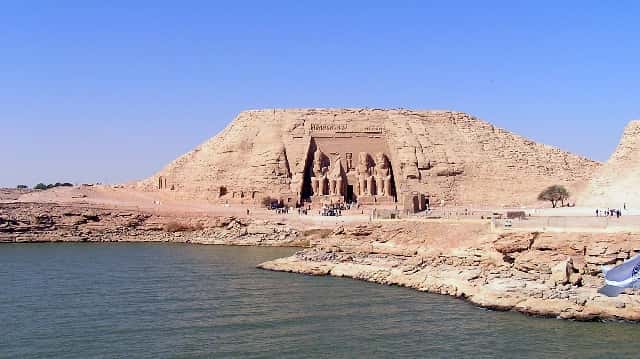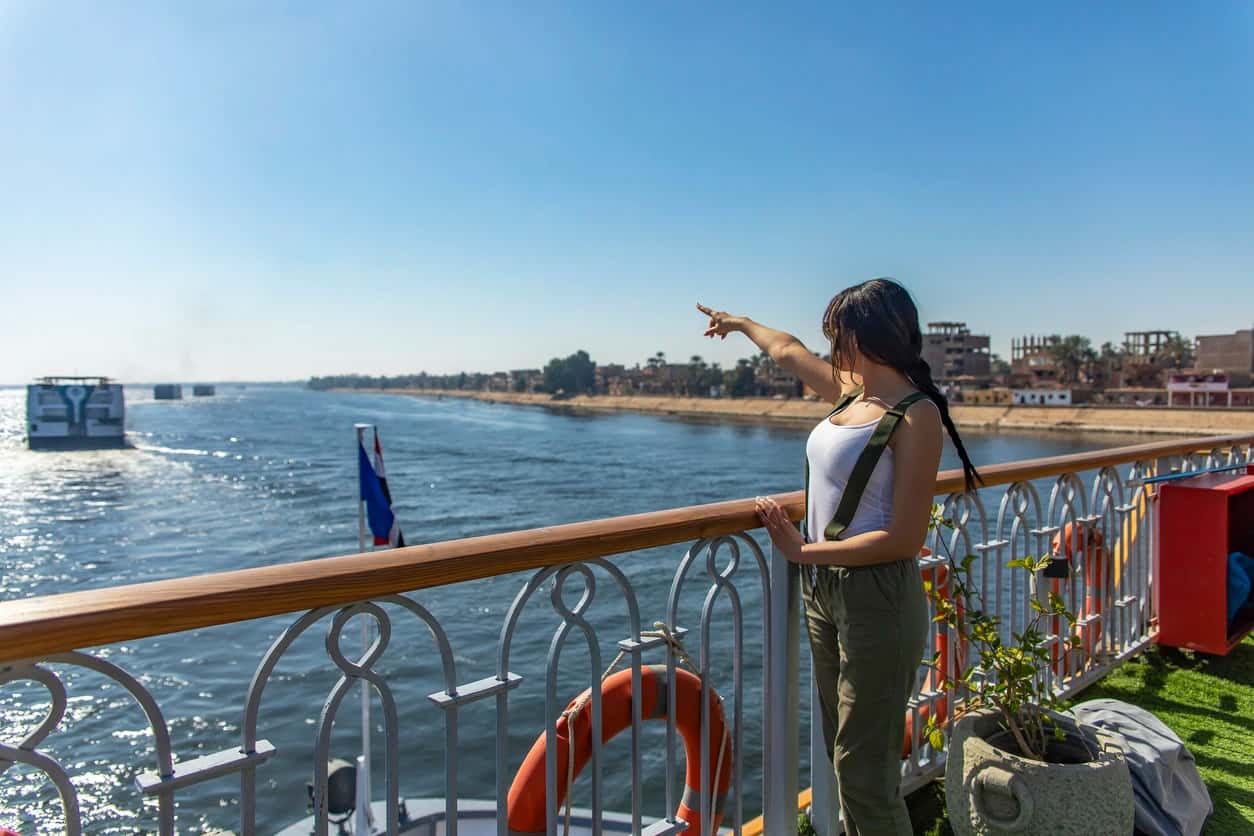
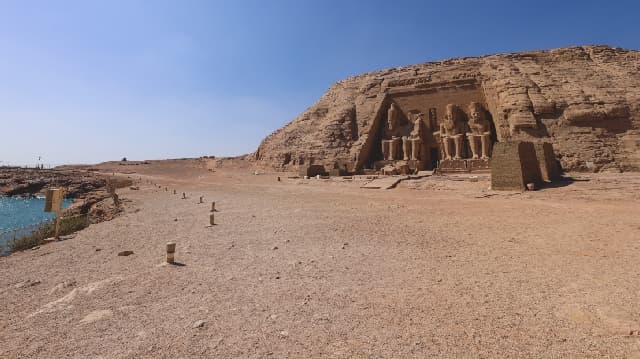
Temple Abu Simbel awaits! Discover Ramses II’s legacy and see the Sun Festival in action—book your trip today.
Abu Simbel, carved by Ramses II over 3,000 years ago near Egypt’s southern border, features two rock-cut temples honoring the pharaoh, his queen Nefertari, and the gods Amun, Ra-Horakhty, and Ptah. The Great Temple’s colossal statues and the precise Sun Festival alignment—illuminating its sanctuary twice yearly—showcase ancient Egypt’s engineering brilliance.
Rediscovered in the 19th century, the temples were rescued in the 1960s from flooding by Lake Nasser. In a landmark UNESCO-led effort, the complex was relocated block by block to higher ground. Today, Abu Simbel stands as a timeless symbol of ancient power and modern preservation.
The temples of Abu Simbel reflect Ramses II’s ambition, portraying him as both a god and ruler. Built to assert Egypt’s power in Nubia, they remain lasting symbols of his legacy and ancient Egypt’s grandeur.
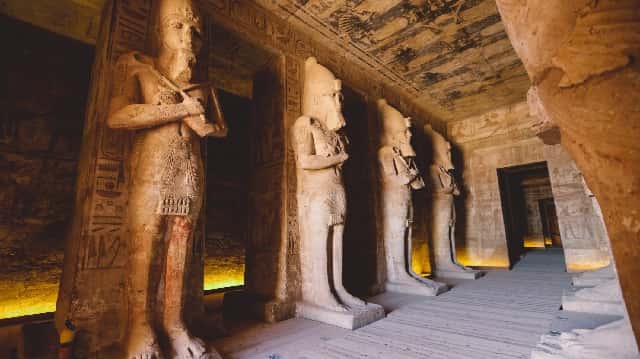
Four towering statues of Ramses II symbolize his divine authority and legacy, accompanied by carvings of his family and signs of ancient damage.
The temple's layout narrows toward the sanctuary, with Osiride pillars depicting Ramses as Osiris, reinforcing his eternal rule.
Detailed reliefs dramatize Ramses’ victory at Kadesh, showcasing him as a heroic and strategic leader.
The temple leads through carved halls to a sanctuary where sunlight aligns with statues of Ramses and major deities.
Walls depict Ramses as both warrior and god, while Nefertari’s temple shows a gentler, devotional side of royal life.
Ramses is portrayed alongside gods like Amun-Ra and Ptah, asserting his own divine status for eternity.
Equal-Sized Statues of Nefertari and Ramses
Statues of Nefertari match Ramses in height—an unprecedented tribute to the queen’s elevated status.
Hathor’s Role and Divine Connection
Hathor, goddess of love and rebirth, dominates the temple’s design, emphasizing divine protection and feminine power.
Unique Artistic Elements
Interior art focuses on harmony between the royal couple and the gods, with Nefertari shown in sacred rituals among deities.
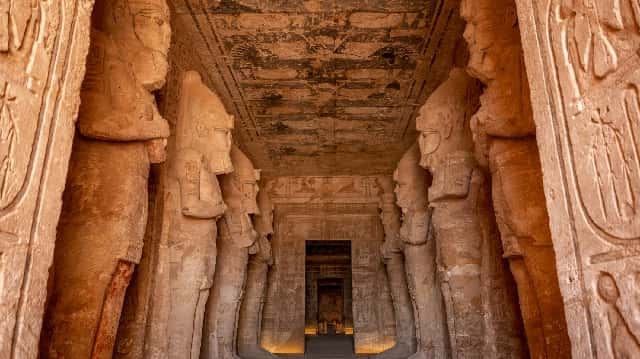
Abu Simbel was crafted as a political and religious statement. Ramses II used it to display divine authority, military power, and national unity, positioning himself among the gods and securing Egypt’s influence over Nubia.
The temples reflected Ramses II’s ambition—to immortalize his reign, celebrate victory at Kadesh, and declare his divinity beside Egypt’s major gods.
Located near Egypt’s border with Sudan, Abu Simbel is reached from Aswan by flight, road, or boat. Its remote desert setting and view of Lake Nasser enhance its monumental presence.
Through Abu Simbel, Ramses II proclaimed his godhood, glorified military success, and honored Queen Nefertari. It was a lasting symbol of his divine rule and political supremacy.
Built at Egypt’s southern border, Abu Simbel asserted control over Nubia's resources and trade, sending a powerful message of dominance to allies and rivals alike.
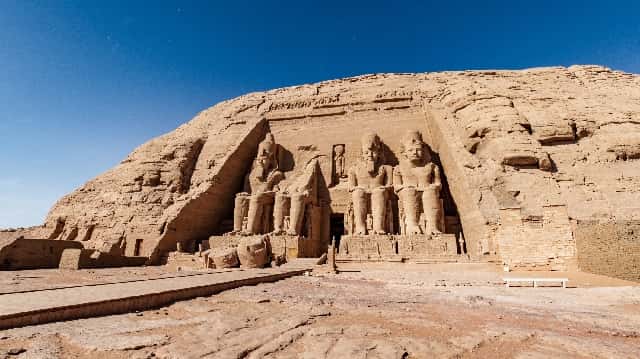
In the 1960s, Egypt’s drive for modernization posed an existential threat to Abu Simbel. The creation of Lake Nasser, resulting from the Aswan High Dam, meant the temples would be submerged without swift intervention. This crisis sparked one of the most ambitious archaeological rescue efforts in history.
Relocation began in 1964 and concluded in 1968. Massive stone blocks, each weighing up to 30 tons, were cut with precision and reassembled on higher ground to escape submersion from the dam’s reservoir.
Over 50 countries contributed to the project under UNESCO’s coordination. Advanced engineering preserved the temple’s orientation with a solar shift of just one day—an achievement widely recognized as a landmark in archaeological conservation.
UNESCO led a global initiative to dismantle and relocate Abu Simbel. From 1964 to 1968, the temples were cut into over 1,000 blocks, transported 65 meters higher and 200 meters back, and reassembled within an artificial hill. Engineers preserved both structure and solar orientation, achieving near-perfect alignment.
Each year on February 22 and October 22, sunlight travels through the temple’s axis to light the statues of Ramses II, Amun, and Ra-Horakhty, while Ptah remains in shadow. These dates mark the pharaoh’s birth and coronation.
Launched in 1960, the Aswan High Dam promised national development but also risked flooding dozens of ancient monuments. Abu Simbel lay directly in the dam’s path, prompting urgent international concern over its potential loss.
The successful relocation inspired the 1972 World Heritage Convention. In 1979, Abu Simbel was officially inscribed as a UNESCO World Heritage Site, symbolizing what international cooperation can accomplish in cultural preservation.
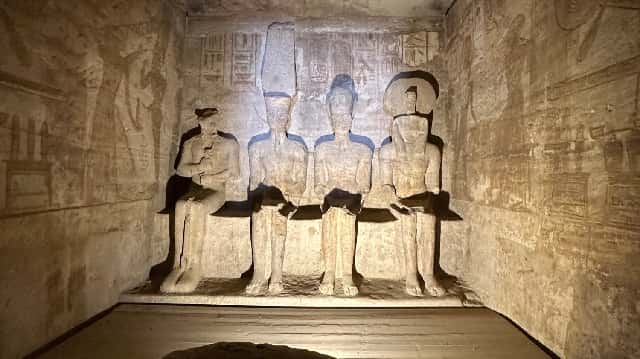
Travelers can reach Abu Simbel from Aswan by air, road, or Nile cruise.
By Air: EgyptAir operates near-daily 45-minute flights (except Sundays) one-way, with a shuttle transfer to the site included.
By Road: The 3–4 hour journey across the desert can be made by group tours, private car, or public bus.
By Cruise: Select Lake Nasser cruises stop near the temples, offering off-peak access.
From Cairo, a 1 hour 25-minute flight to Aswan connects travelers to these options.
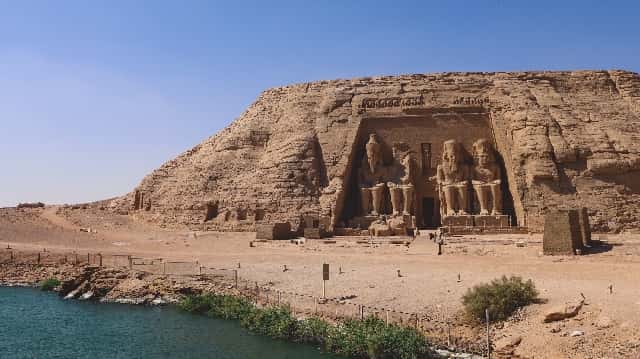
The Enduring Legacy of Abu Simbel
Abu Simbel is a lasting symbol of Ramses II’s power and vision, blending ancient artistry with modern preservation. Saved from submersion by a global effort, the temples now stand as a testament to both Egypt’s grandeur and humanity’s commitment to protecting cultural heritage.
They reflect Ramses II’s power, commemorate his military victories, and symbolize Egypt’s dominance over Nubia. The temples are also famed for their precise solar alignment.
Constructed between 1264–1244 BCE, the temples honored the gods, showcased Ramses II’s authority, and reinforced Egypt’s presence in resource-rich Nubia.
Dedicated to Queen Nefertari and Hathor, it uniquely features the queen equal in stature to Ramses II—rare in ancient Egyptian art.
In the 1960s, the temples were dismantled and relocated 65 meters higher to escape Lake Nasser’s rising waters, in a UNESCO-led operation.
Held on February 22 and October 22, sunlight aligns with the inner sanctuary to illuminate statues of deities—marking Ramses II’s birthday and coronation.
You can fly (45 minutes), drive (3–4 hours via tour, private car, or bus), or visit via Lake Nasser cruise.
October to April offers pleasant weather. For fewer crowds, visit mid-morning. For the solar phenomenon, come during the Sun Festival dates.
To honor the gods, glorify Ramses II’s rule, celebrate military triumphs, and assert Egypt’s power in Nubia.
Inside are grand halls, detailed battle scenes, statues of Ramses II, and carvings depicting royal and religious life, including depictions of Queen Nefertari.
Between 1964–1968, over 1,000 massive blocks were cut, moved, and reassembled in a $40 million international effort led by UNESCO.
Sail in style on a Nile cruise and visit the majestic temple Abu Simbel—your luxury trip to Egypt starts here.
